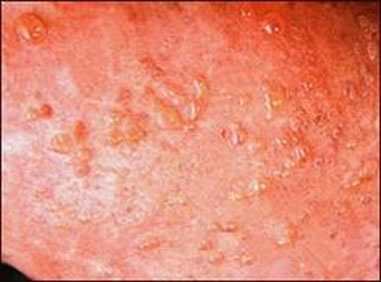Pellagra is a nutritional disease characterized by a deficiency of niacin (vitamin B3) and tryptophan, an essential amino acid. It is not a common illness to be seen, but it is more common among the elderly, alcoholics and malnourished people.
Tryptophan is an essential amino acid that, in mammalian tissues, can be transformed into niacin, thus making up for its lack. Niacin is very important for cell metabolism, as it composes important coenzymes in cell respiration. These coenzymes also participate in hormone formation; in the metabolism of carbohydrates, amino acids and lipids; in the conversion of lactic acid to pyruvic acid; and in the reactions that produce energy for the cell. When there is a lack of niacin, the cell does not work very well and this primarily affects the tissues that have high energy demand, such as the brain, or tissues that need intense cell division, such as skin and mucous membranes. For this reason, these are the main organs affected by this disease.
Do not stop now... There's more after the advertising ;)
People who have Hartnup's disease (rare hereditary disease characterized by non-absorption of tryptophan by the kidneys and intestine) have to take high doses of niacin to prevent the symptoms of pellagra.
Pellagra is known as the 3D disease because it causes dermatitis, diarrhea and dementia in more advanced cases. Other symptoms of the disease are indigestion, anorexia and fatigue.
Diagnosis is made through urine and blood tests and the patient's dietary history.
After the disease is diagnosed, treatment is done with B complex vitamins (B1,B2 and B6), pantothenic acid and foods rich in tryptophan and niacin. The patient should not drink alcoholic beverages during treatment.
Foods rich in niacin are lean meats, offal, poultry, fish, peanuts, pulses and brewer's yeast. Milk and eggs are low in niacin but rich in tryptophan.
Paula Louredo
Graduated in Biology
Would you like to reference this text in a school or academic work? Look:
MORAES, Paula Louredo. "Pellagra"; Brazil School. Available in: https://brasilescola.uol.com.br/doencas/o-que-pelagra.htm. Accessed on June 29, 2021.


